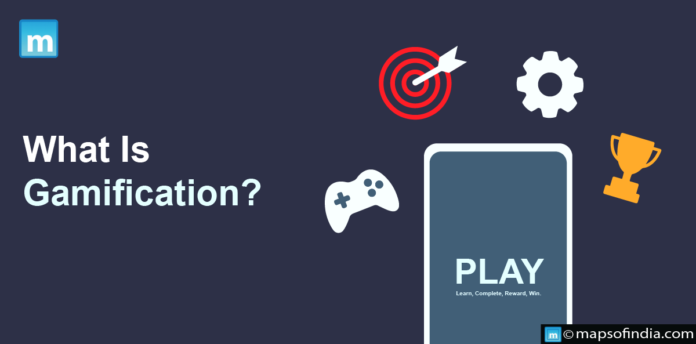Today, forward-thinking entrepreneurs leverage Gamification to elevate user engagement, bolster motivation, and drive toward their desired objectives. Many Indian startups use game design elements, principles, and mechanics, making their platform more enjoyable and engaging by tapping into the inherent human desire for competition. And no, Gamification is not just about gaming. Gamification adds game mechanics to non-game environments, like websites, online communities, learning management systems, or business intranets, to increase participation. Let’s understand in detail!
What is Gamification?
Gamification applies concepts and techniques from games in different sectors to engage and motivate people, encourage behavior, and solve problems. Gamification involves using game mechanics for non-gaming activities “to increase user engagement, happiness, and loyalty.”
How does Gamification work?
Gamification works by appealing to people’s inherent urge to compete and play. It accomplishes this by mixing game aspects into non-game activities such as points, badges, leaderboards, and challenges.
People who participate in gamified activities are rewarded for their progress and achievements. This reward system encourages people to persevere and achieve their objectives. Gamification, in addition to being encouraging, may also be incredibly interesting. Leaderboards and challenges in games provide a sense of competition and excitement. Even the most basic chores can be made more delightful by doing so.
How can Gamification be used in a variety of settings?
Gamification is used in various settings, including education, business, healthcare, and government. Here are a few examples:
-
Education
Gamification components are used in many educational apps and websites to engage students and improve learning outcomes. Duolingo, for example, employs points, medals, and leaderboards to incentivize users to learn a new language.
-
Business
Gamification is widely used in businesses to engage staff and boost productivity. Salesforce, for example, employs a gamified platform called Trailhead to train and educate its staff.
-
Healthcare
Gamification is often used by healthcare providers to motivate patients to stick to their treatment plans. Healthify, for example, leverages gamification to promote healthy habits, incentivizing users to achieve their health-related milestones.
-
Government
Gamification is used by many government bodies to encourage citizens to participate in civic activities. The city of Philadelphia, for example, utilizes a gamified app called Philly Citizen to motivate individuals to report potholes and other concerns in their neighborhood.
Tips for Implementing Gamification
- Customize the gamification experience to your audience’s specific requirements and interests.
- To foster community and competition, include social aspects such as leaderboards and challenges.
- The gamification experience should be difficult but doable. People will become frustrated and give up if the tasks are too demanding.
- Provide regular feedback on people’s progress and accomplishments. This will assist them in remaining motivated and engaged.
- Reward people for their achievements and advancement. Rewards might range from points and badges to actual cash.
Gamification is an effective tool for motivating and engaging people, as well as for enhancing learning outcomes and increasing productivity. Gamification is a great way to make your activities or platform more fun and intriguing.





